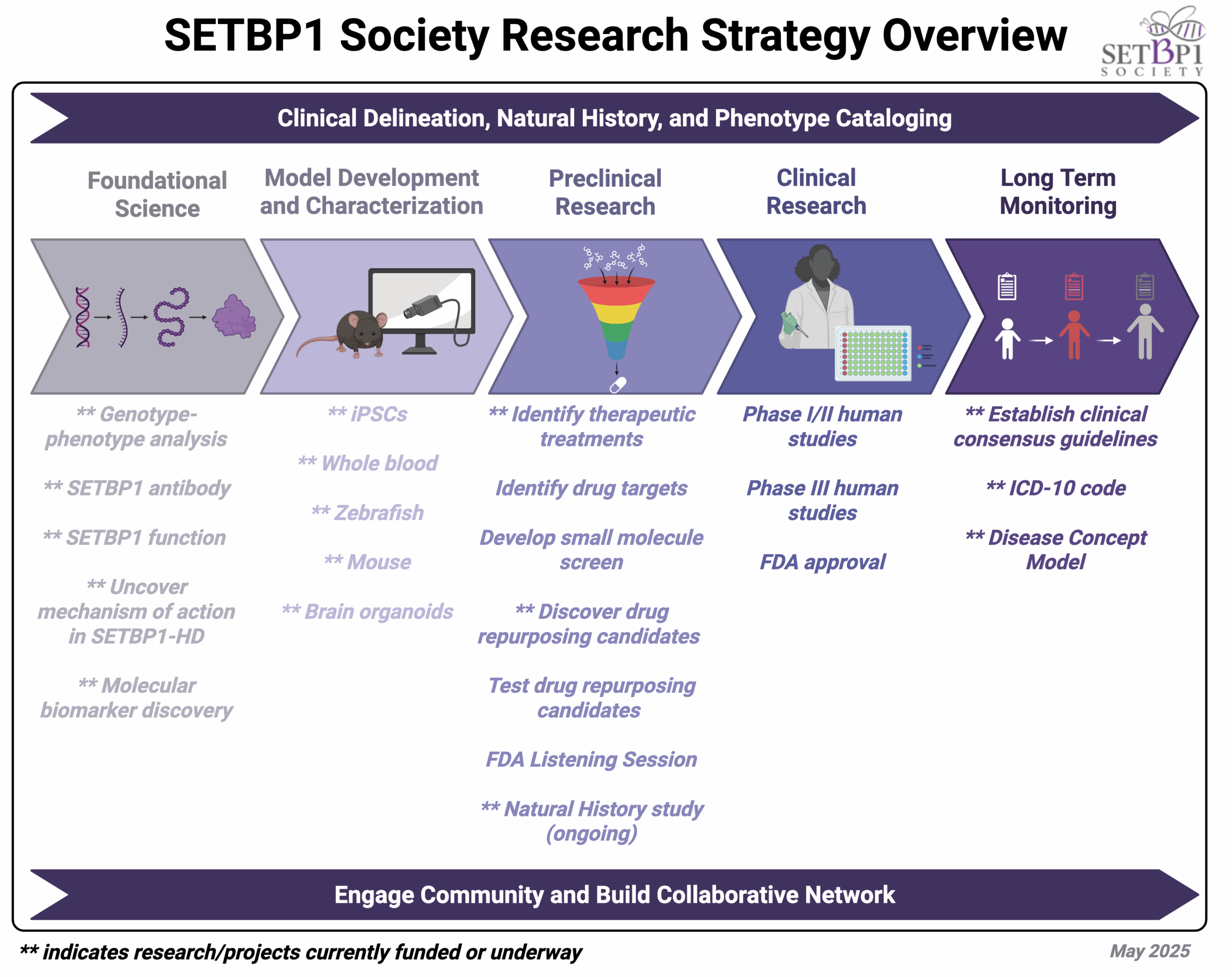SETBP1 Society Research Strategy: A Roadmap Toward Treatments and Therapeutics
At SETBP1 Society, we are committed to a singular mission: advancing research that leads to effective treatments and improved quality of life for individuals with SETBP1 haploinsufficiency disorder (SETBP1-HD) and related disorders. While SETBP1-HD is considered ultra-rare—with fewer than 300 known individuals worldwide—important scientific progress has been made since the first case was identified in 2011 and the SETBP1 Society was founded in 2017.
What We Know About SETBP1-HD
SETBP1-HD is caused by changes in the SETBP1 gene, which plays a critical role in early brain development. Individuals with SETBP1-HD are haploinsufficient, meaning they have a loss of function in one copy of the gene, which results in the clinical manifestations of the disorder.
Thanks to years of collaboration between researchers, clinicians, and families, we now have a deeper understanding of the clinical spectrum of SETBP1-HD. In addition, scientists have developed cell lines and a growing number of animal models that are currently being characterized—crucial steps in identifying therapeutic targets.
We also recognize individuals who carry SETBP1 gene changes but present with overlapping features or uncertain molecular consequences. These individuals are classified as having SETBP1-related disorders (SETBP1-RD) and are a critical part of our research focus as well.
Our 2025 Research Strategy
To highlight our priorities and progress, we’ve developed a research strategy infographic (see above) outlining where we are now and where we’re headed. This framework reflects our current priorities as of May 2025, and emphasizes a full spectrum of research initiatives—from foundational discovery to real-world clinical application.
Key focus areas include:
- Foundational Science: Understanding SETBP1’s role in brain development and cellular function
- Model Development and Characterization: Utilizing cellular and animal models to uncover disease mechanisms
- Preclinical Research: Identifying and testing candidate therapies in laboratory settings
- Clinical Research: Designing and conducting studies that evaluate safety and effectiveness in humans
- Long-Term Monitoring: Building data systems and natural history studies to track outcomes over time
Each of these areas is essential to our long-term goal: identifying safe and effective treatments for individuals with SETBP1-HD.
Our Commitment
SETBP1 Society is deeply committed to transparency, collaboration, and education. We will continue to provide regular updates on our research strategy and actively support initiatives that move us closer to clinical solutions. Through strong partnerships and a unified community, we believe progress is not only possible—it’s already happening.
Together, we are SETBP1Strong.
